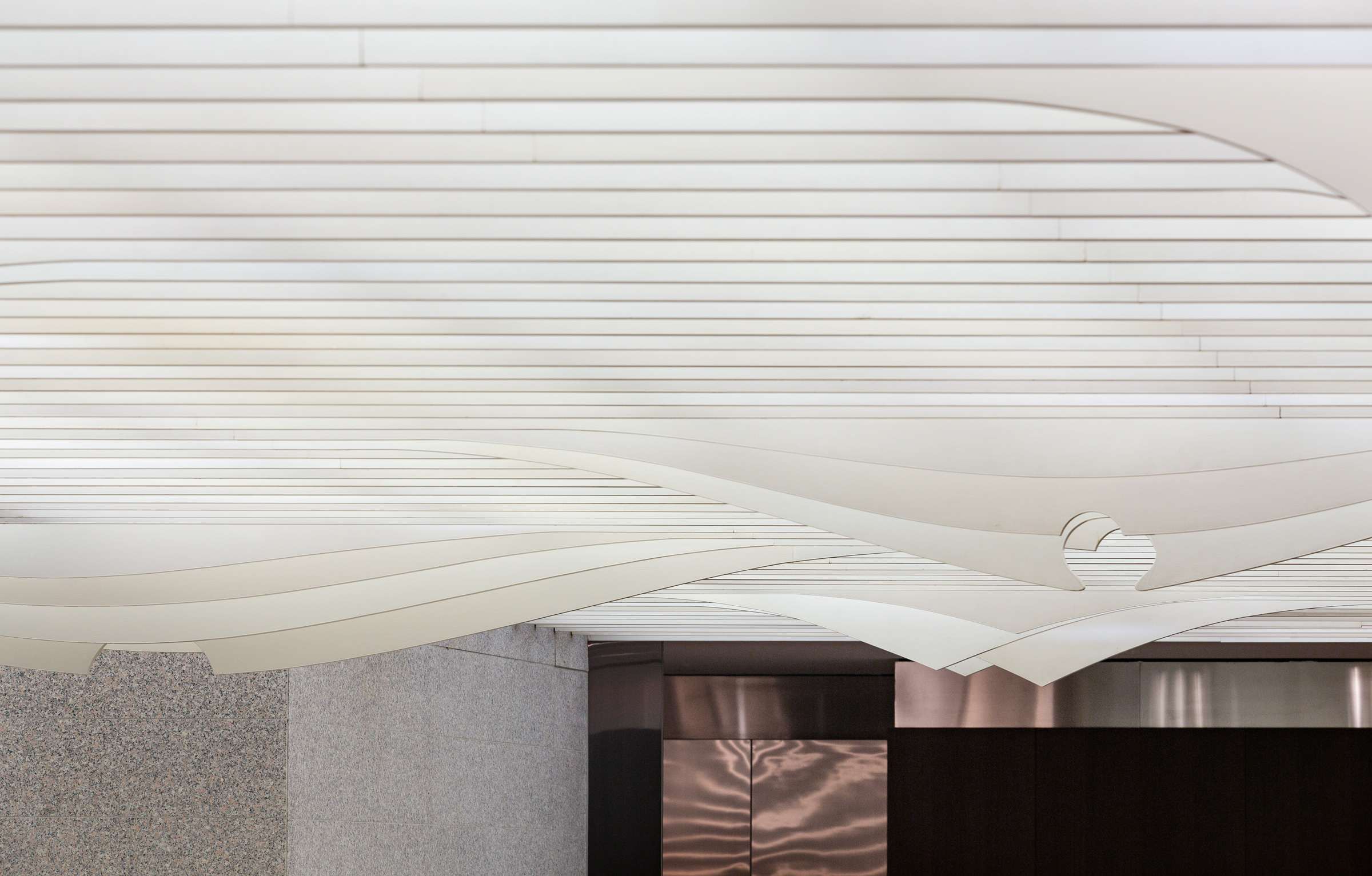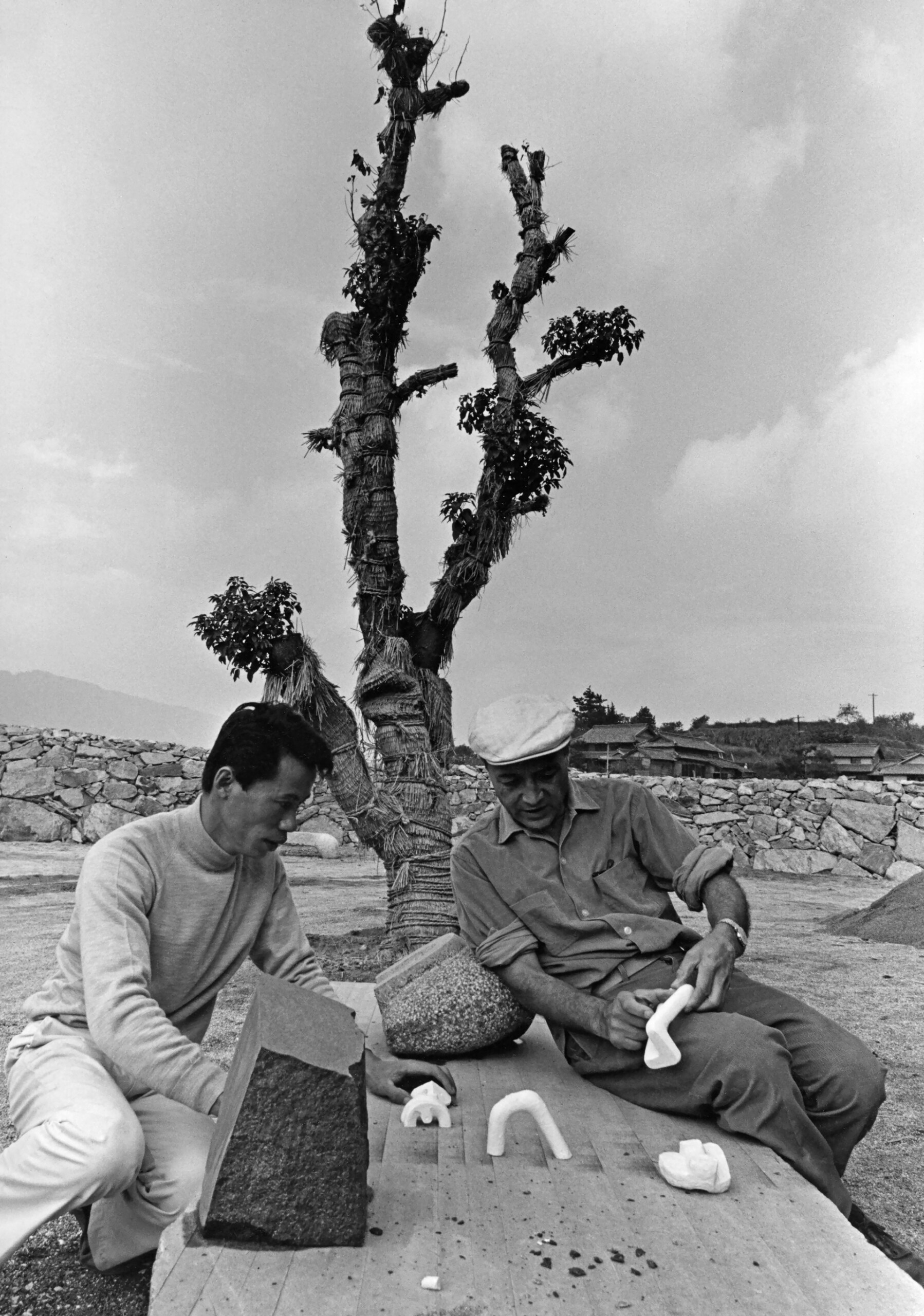Isamu Noguchi’s Ceiling and Waterfall for 666 Fifth Avenue, New York (1956–57), which were permanently removed from the building in 2020, were shown as the centerpiece of the exhibition Isamu Noguchi: A New Nature, at White Cube Bermondsey, London, February 4 – April 3, 2022.
What follows provides some additional context about the history of the work and The Isamu Noguchi Foundation and Garden Museum’s intentions for its future.
To learn more about other site-specific works by Isamu Noguchi that were later destroyed or fundamentally altered, please see Altered and Destroyed.
The History of Ceiling and Waterfall, 666 Fifth Avenue, New York
In 1955 the architect Robert Carson of Carson & Lundin contacted Isamu Noguchi about reusing a design Noguchi had conceived for him for an unrealized bank project in Texas, for a building Carson was designing for Tishman Realty and Construction at 666 Fifth Avenue in New York City, across the street from The Museum of Modern Art. The construction of this building was documented in Shirley Clarke’s film Skyscraper (1960).






















